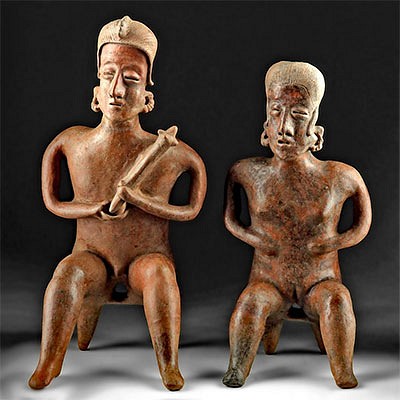Canosan Pottery Seated Eros & Spool-Shaped Base
Lot 19a
About Seller
Artemis Fine Arts
686 S Taylor Ave, Ste 106
Louisville, CO 80027
United States
Selling antiquities, ancient and ethnographic art online since 1993, Artemis Gallery specializes in Classical Antiquities (Egyptian, Greek, Roman, Near Eastern), Asian, Pre-Columbian, African / Tribal / Oceanographic art. Our extensive inventory includes pottery, stone, metal, wood, glass and textil...Read more
Categories
Estimate:
$800 - $1,200
Absentee vs Live bid
Two ways to bid:
- Leave a max absentee bid and the platform will bid on your behalf up to your maximum bid during the live auction.
- Bid live during the auction and your bids will be submitted real-time to the auctioneer.
Bid Increments
| Price | Bid Increment |
|---|---|
| $0 | $25 |
| $300 | $50 |
| $1,000 | $100 |
| $2,000 | $250 |
| $5,000 | $500 |
| $10,000 | $1,000 |
| $20,000 | $2,500 |
| $50,000 | $5,000 |
| $100,000 | $10,000 |
| $200,000 | $20,000 |
About Auction
By Artemis Fine Arts
Mar 25, 2021
Set Reminder
2021-03-25 10:00:00
2021-03-25 10:00:00
America/New_York
Bidsquare
Bidsquare : CLEARANCE Antiquities | Ethnographic Art
https://www.bidsquare.com/auctions/artemis-gallery/clearance-antiquities-ethnographic-art-6663
Featuring discounted pricing on Asian art, Classical antiquities from Egypt, Greece, Italy, and the Near East...plus Pre-Columbian, Tribal, Russian Icons, Spanish Colonial, Fine Art, more! Artemis Fine Arts info@artemisgallery.com
Featuring discounted pricing on Asian art, Classical antiquities from Egypt, Greece, Italy, and the Near East...plus Pre-Columbian, Tribal, Russian Icons, Spanish Colonial, Fine Art, more! Artemis Fine Arts info@artemisgallery.com
- Lot Description
**First Time At Auction**
Magna Graecia, Apulia, Canosan Hellenistic Period, ca. 3rd to 2nd century BCE. An elegant votive figure of a winged cherub - perhaps Eros or an Erote - depicted nude with delineated genitals and fluttering wings. The figure is presented in a seated yet dynamic, perhaps alighting pose, with both legs bent at the knees and arms raised and bent at the elbows before his chest. What's more, his visage is delightful, skillfully delineated with delicate features framed by a curly coiffure that falls to and beyond his shoulders. Eros is fitted to a spool-shaped base via a thick metal support. Further contributing to the allure of this piece is the wonderful pigmentation - pink, white and blue -remaining on the piece. Size: 3.5" diameter of base x 5.875" H (8.9 cm x 14.9 cm)
Canosa, or Canosion as it was known then, was a major center of the ceramics and pottery trade when it was a Greek polis. Canosan artists produced truly unique pottery, completely different in decoration style from earlier and neighboring traditions. The clay is buff, with the decoration applied directly to it without the use of slip.
Provenance: private New Jersey, USA collection, 2015; ex-private Georgia, USA collection, before 2011
All items legal to buy/sell under U.S. Statute covering cultural patrimony Code 2600, CHAPTER 14, and are guaranteed to be as described or your money back.
A Certificate of Authenticity will accompany all winning bids.
We ship worldwide and handle all shipping in-house for your convenience.
#158285Spool-shaped base: losses to peripheries, expected surface wear with areas of pigment loss, deposits, and encrustations. Eros: Losses to tips of fingers/hands and wings. Both show expected surface wear commensurate with age. Nice remains of pink, white, and blue pigments. Eros may be lifted from base - joined to base with modern metal fitting via hole through buttocks.Condition
- Shipping Info
-
All shipping is handled in-house for your convenience. Your invoice from Artemis Gallery will include shipping calculation instructions. If in doubt, please inquire BEFORE bidding for estimated shipping costs for individual items.
-
- Buyer's Premium



 EUR
EUR CAD
CAD AUD
AUD GBP
GBP MXN
MXN HKD
HKD CNY
CNY MYR
MYR SEK
SEK SGD
SGD CHF
CHF THB
THB















